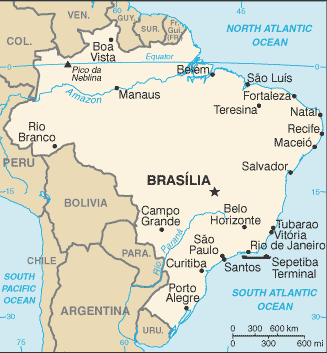In the first half of this century, the most outstanding works were composed by Luis Alvares Pinto, Caetano de Mello de Jesus and Antonio Jose da Silva, the Jew, who became successful in Lisbon writing librettos for comedies, which were performed also in Brazil with music by Antonio Teixeira.
In the second part of the 18th century, there were a great flourishing in Minas Gerais, mostly in the regions of Vila Rica, Mariana and Arraial do Tejuco, where the mining of gold and diamond for the Portuguese metropolis attracted a sizable population. At this time, the first outstanding Brazilian composers were revealed, most of them mulattoes. The musical pieces were mostly sacred music. Some of the noteworthy composers of this period were Lobo de Mesquita, Manoel Dias de Oliveira, Francisco Gomes da Rocha, Marcos Coelho Neto and Marcos Doelho Neto Filho. All of them were very active, but in many cases few pieces survived until the present days. Some of the most famous pieces of this period are the Magnificat by Manuel Dias de Oliveira and the Our Lady's Antiphon, by Lobo de Mesquita. In the city of Arraial do Tejuco, nowadays Diamantina, there were ten conductors in activity. In Ouro Preto about 250 musicians were active, and in all of the territory of Minas Gerais most of thousand musicians were active.

No comments:
Post a Comment